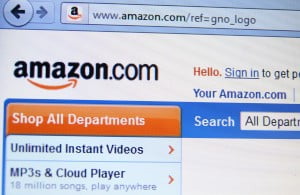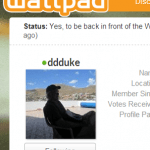The Best Author Websites Out There + What’s Great About Them
You asked for it, and you got it! I have finally (finally!) gotten around to compiling my mega-list of the best author websites.
Below are many examples of author websites that are widely regarded for their design, functionality, and ability to engage readers. In addition to listing some high-quality sites by well-known authors, we’ll break down what makes these sites effective. Whether you’re an aspiring writer looking for inspiration or a curious reader examining how writers build their brands online, these examples showcase what “best-in-class” author platforms can look like. Take a look at each author’s page and make some notes. What do you like about it? What do you dislike? What features and functions can you use on your own site?
Also, this is a screenshot of the mega-fabulous “Warrior Cats” website, based on the books by Erin Hunter. It has so much going for it–an immersive universe with detailed maps, character profiles, and rich lore invites fans to dive deeper into the fictional world, fostering a sense of connection and discovery. Community interaction thrives through engaging forums, fan art galleries, and events that transform visitors into active participants, nurturing a vibrant and dynamic fan community. Meanwhile, multi-platform appeal is seamlessly integrated with merchandise, reading guides, and social links, encouraging exploration across various formats and catering to a diverse range of interests. Ordinarily I don’t recommend that authors build out a whole website over one book (or one series), but this is obviously an exception.
Sorry, got distracted by the Warrior Cats. Here’s the list!!
Here is what all of these websites have in common. I’m linking you back over to the “Author Websites” page so you can see a comprehensive list of website resources we’ve created over the years. Because there are just so, so many.
1. Brand Consistency and Aesthetics:
Your site’s visuals—colors, fonts, imagery—should mirror the tone, style, and themes of your writing. A cohesive brand identity instantly welcomes visitors into your narrative world, enhancing recognition and trust.
2. User-Friendly Navigation:
Keep layouts simple and intuitive. Clear menus, search functions, and logical organization ensure readers can quickly find books, event details, media appearances, or contact information without feeling overwhelmed.
3. Rich, Updated Content and Email Signups:
Fresh content (blog posts, interviews, event announcements) encourages repeat visits. Offer an email signup option for newsletters and release alerts, giving readers a convenient way to stay informed. Embedding social media feeds and podcasts keeps your site dynamic and further signals that you value ongoing engagement.
4. Comprehensive Bibliography and Engaging Extras:
Present a detailed, organized list of works with summaries, excerpts, purchase links, and related resources. Enhance the reader experience with reading guides, behind-the-scenes notes, and interactive elements like quizzes or puzzles to draw visitors deeper into your literary universe.
5. Interactivity, Community Building, and Global Reach:
Foster a sense of community and inclusivity. Offer Q&A sessions, comment sections, forums, and multilingual support. Highlight international events, press coverage, and encourage readers from diverse backgrounds to participate—turning your site into a global meeting place for fans and followers.
6. Multimedia Elements:
Integrate videos, audio interviews, high-resolution book covers, and embedded media appearances. An immersive multimedia environment appeals to various learning styles and engages visitors longer, strengthening their connection to your work.
These combined principles offer a comprehensive framework for creating an engaging, reader-friendly, and globally appealing author website. By applying these principles—anchored by a strong brand identity, intuitive navigation, updated content, a compelling bibliography, interactive community features, multimedia elements, and strategic email signups—you can craft an author website that not only stands out visually and functionally but also builds lasting relationships with readers around the world.






